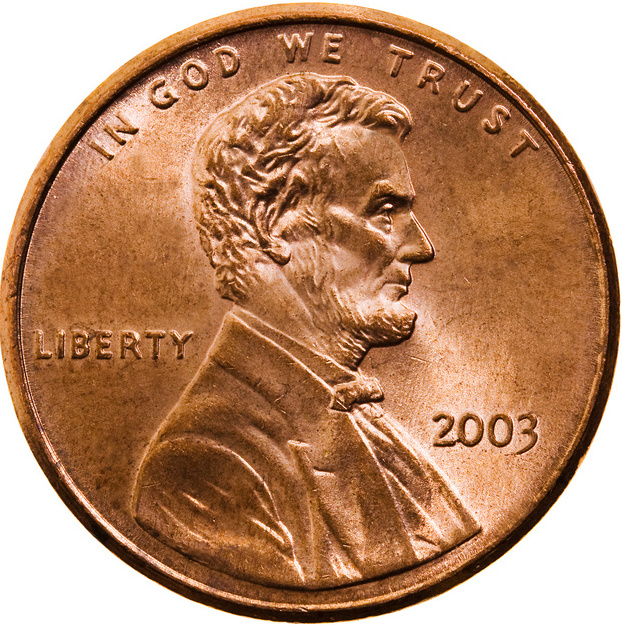A penny just got a little cheaper. Making it, that is.
While the billions of new U.S. pennies put into circulation every year still cost more to make than they are worth, the government is catching a break from the collapse in metals prices. Each one-cent coin – made almost entirely of zinc – cost 1.43 cent to produce last year, down 14 percent from a year earlier and the lowest since 2008, according to data from the U.S. Mint. As recently as 2011, the cost was 2.41 cents. Since then, zinc prices fell 34 percent from a peak as demand slowed in China, the world’s biggest buyer.
The last time a penny cost what it was worth was in 2005. While the Mint doesn’t foresee breaking even on the coin, cheaper metal last year helped to boost output 16 percent to 9.155 billion pennies. For taxpayers, that meant the United States made 1.235 billion more pennies for about $555,000 less than it spent a year earlier.
Made almost entirely of copper until 1982, the coin is now 97.5 percent zinc, a metal used mostly to help prevent rust and found in all sorts of products, from electronics to paint to sunscreen.
“If you look at zinc, specifically with respect to the penny, it’s very clear that you’re in a bear market, continuing to hit new lows,” said Adam Sarhan, the chief executive officer of Sarhan Capital in Bay Hill, Florida. “Demand is waning across the globe, and until we see a bullish catalyst, the path of least resistance is remaining lower for the foreseeable future.”
That would be good news for coin makers, including the U.S. Mint, which used about 25,358 metric tons of zinc to make pennies last year. On Jan. 12, zinc tumbled to a six-year low of $1,444.50 a ton on the London Metal Exchange, after a 26 percent plunge in 2015 that was the biggest annual decline in seven years. Prices had recovered to $1,725 on Thursday.
Low zinc costs may not last. Global demand outpaced production by 50,000 tons in 2015, and the market will see a deficit this year of about 53,000 tons, forcing manufacturers to draw down inventories, according to analysts at RBC Capital Markets. The bank forecasts a “modest” rebound in demand this year and next, after a slowdown in 2015. Zinc will average about $1,984 this year, the RBC estimates.
Copy the Story LinkSend questions/comments to the editors.



Success. Please wait for the page to reload. If the page does not reload within 5 seconds, please refresh the page.
Enter your email and password to access comments.
Hi, to comment on stories you must . This profile is in addition to your subscription and website login.
Already have a commenting profile? .
Invalid username/password.
Please check your email to confirm and complete your registration.
Only subscribers are eligible to post comments. Please subscribe or login first for digital access. Here’s why.
Use the form below to reset your password. When you've submitted your account email, we will send an email with a reset code.